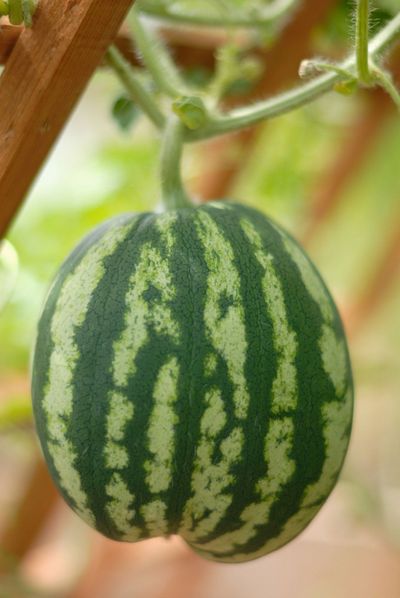How to Grow Watermelons on Trellises
Space is at a premium and getting more so. Population density has more of us living in townhouses or condominiums with little to no garden space. For many, lack of space isn’t a deterrent but a challenge when creating a garden and that’s where vertical gardening comes into play. Quite an array of veggies can be grown vertically, but one of the most surprising is watermelon trellis growing. The surprise, of course, is due to the heft of the melon; it boggles the mind that such a heavy fruit can be hung! However, commercial growers have been growing the melon vertically for some time. In greenhouses, supporting watermelon plants is accomplished by a system of vertical strings held aloft by overhead wires. Growing watermelon on a trellis saves floor space and efficiently utilizes the available vertical area. This method of watermelon vine support also brings the plant closer to the light source. Of course, commercial growers cultivate all varieties of watermelon using a vertical trellising system, but for the home gardener, the small varieties of watermelon are probably the best choice.
How to Make a Watermelon Trellis
In the commercial greenhouse, the overhead wire is about 6 ½ feet (2 m.) above the walkway so workers can reach the trellis without standing on a ladder. When creating a vertical trellis at home, keep in mind that the vine gets quite long, so you’ll need about that much space there as well. Use stout wires screwed into the garden wall, a purchased trellis or use your imagination and re-purpose an ornamental architectural element such as an old, iron gate or fence. The trellis shouldn’t be a lightweight support that is just pushed into a pot. It is going to be supporting a lot of weight, so it needs to be secured to the ground or anchored in a container of concrete. If you use a container for growing watermelon, use one that is wide enough to provide a broad, stable base.
Watermelon Vine Supports
Once you have figured out your trellis, you need to figure out what type of material you will use for a watermelon vine support. It needs to be sturdy enough to support the fruit and able to dry out quickly so it doesn’t rot the melon. Old nylons or T-shirts, cheesecloth, and netted fabric are all good choices; a fabric that breathes and stretches to accommodate the growing melon is best. To create an individual melon support, simply cut a square of the fabric and draw the four corners together — with the fruit inside — and tie together onto the trellis support to create a sling. Watermelon trellis growing is a space saving option and makes harvesting simple. It has the additional bonus of allowing the frustrated farmer in a condo,his or her dream of growing their own edible crop.
